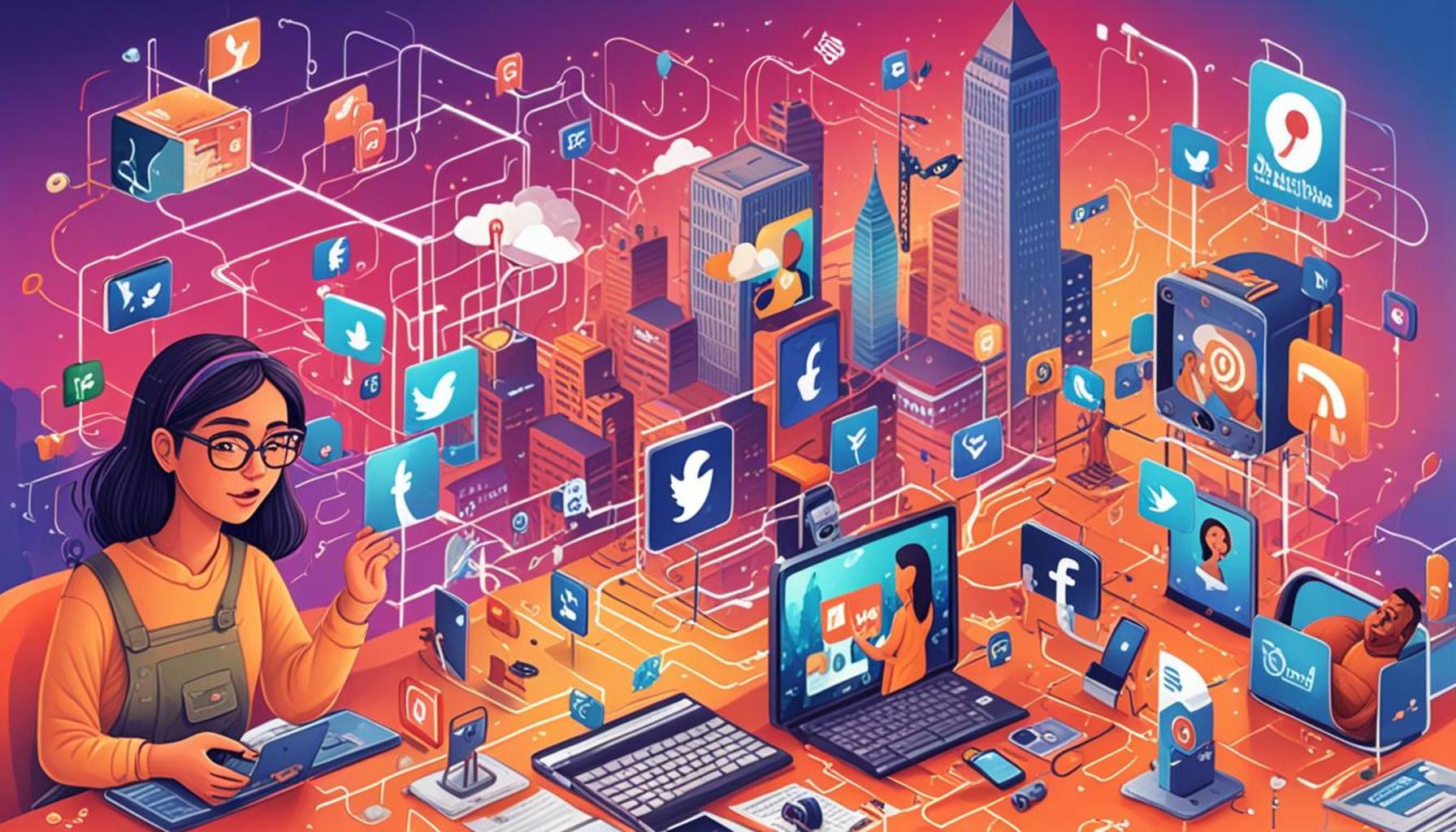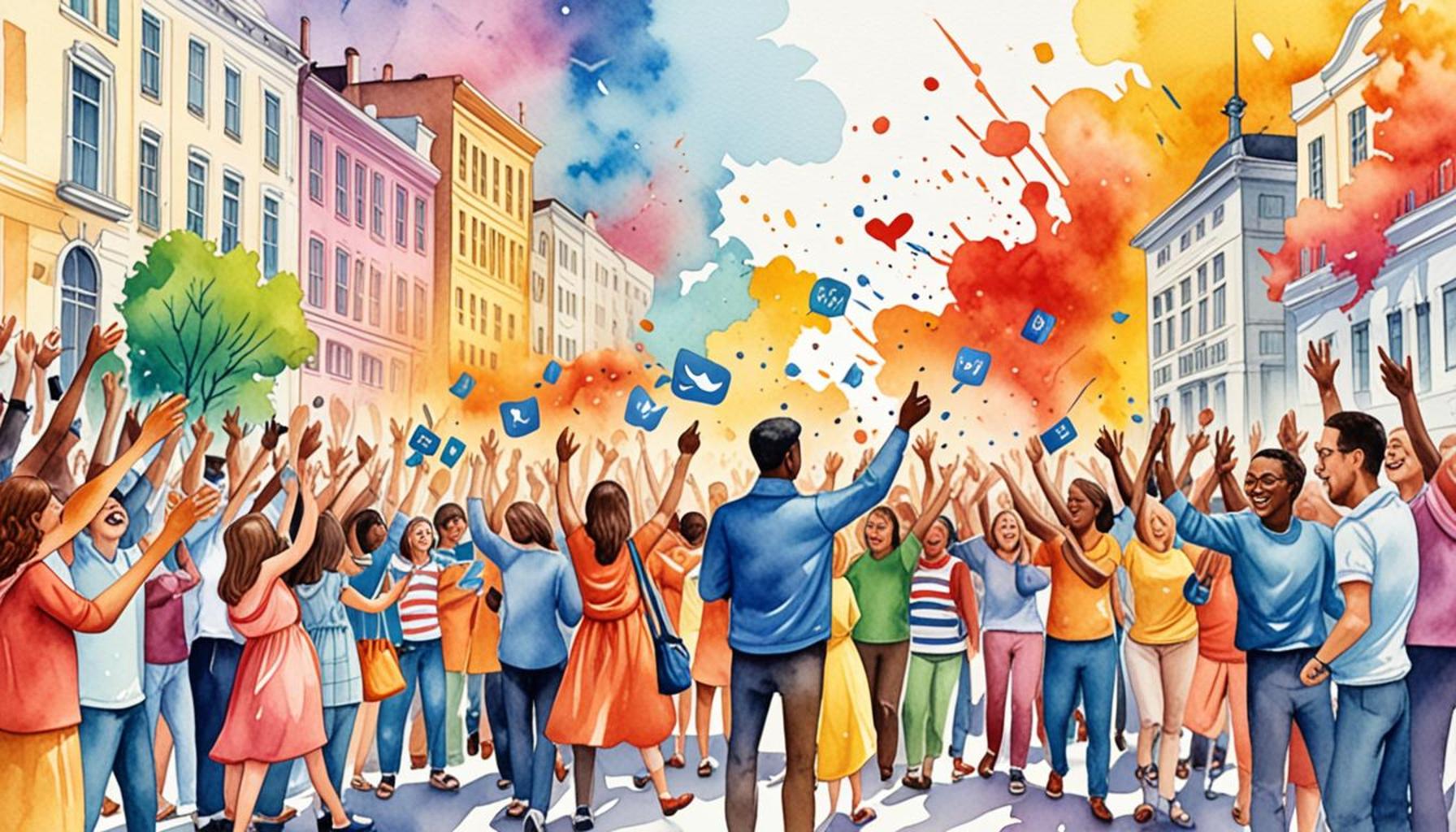How Social Media Platforms Are Facilitating Access to Government Assistance Programs

Connecting Communities with Critical Support
In the ever-evolving landscape of communication, social media platforms are revolutionizing how individuals access vital government assistance programs. As economic hardships continue to challenge many Americans, the demand for clear and accessible support systems has become paramount. Given that millions engage with these platforms daily, they serve as essential conduits for information sharing about government services and assistance programs.
Several key features of social media contribute to this newfound accessibility:
- Real-time information updates—Platforms like Facebook and Twitter allow government agencies to provide timely updates on available assistance programs, ensuring that users receive the most current information regarding eligibility and application timelines.
- Dedicated groups and pages—These spaces create opportunities for individuals to connect, share experiences, and provide peer support. For example, groups focused on unemployment assistance allow members to share tips on navigating the application process or updates on local job openings, fostering a sense of community among users facing similar challenges.
- Targeted advertisements—Through analytics, social media platforms can identify users who may benefit from specific government assistance programs. Advertisements tailored to these individuals can enhance awareness of programs like the Supplemental Nutrition Assistance Program (SNAP) and the Affordable Care Act (ACA), guiding them through eligibility and application procedures.
The empowerment fostered through social media extends beyond communication; it enables users to navigate complex bureaucracies with greater ease. Numerous individuals have reported discovering essential resources through Facebook posts, Instagram stories, or Twitter threads. For instance, a single tweet highlighting the availability of emergency rental assistance can lead many to inquire, apply, and secure much-needed help.
This article explores the mechanisms by which social media facilitates access to government assistance, drawing on case studies, user testimonials, and current trends. It highlights how these digital platforms have become more than just social networks; they represent vital lifelines for individuals seeking information on unemployment benefits, food assistance, healthcare coverage, and more.
As we delve into this topic, we invite readers to examine the profound impact of technology on bridging the gap between communities and critical resources, revealing a dynamic intersection of social media and public service that is poised to shape the future of assistance accessibility in the United States.
RECOMMENDED: Check out this similar article
Bridging the Gap: Information Access and Community Engagement
The role of social media platforms in disseminating information about government assistance programs cannot be understated. By leveraging the vast reach and immediacy of platforms like Facebook, Twitter, and Instagram, government agencies can effectively communicate with citizens who may desperately need support. In an era where traditional methods of outreach often fail to connect with individuals, social media provides a more direct and engaging channel.
One of the most significant advantages of social media is its ability to segment information tailored to specific audiences. Government departments can utilize features like targeted ads to reach those who might be eligible for specific programs but are unaware of their existence. For instance, a study indicated that younger demographics are increasingly turning to social media for information about benefits. This shift has prompted agencies to create dedicated content that resonates with these users, using language and imagery that foster a sense of relevancy and urgency.
- Infographics and visuals—Visual content, such as infographics, significantly enhances the ability to share complex information quickly and understandably. Programs like Medicaid and housing assistance can be dissected and presented in a visually appealing manner, making the details more digestible for users across various backgrounds.
- Interactive Q&A sessions—Platforms like Instagram and Facebook enable government representatives to host live Q&A sessions where users can ask about specific programs in real-time. This interactive format not only delivers information but also allows for personalization, as individuals can have their unique concerns addressed directly.
- Success stories—Sharing testimonials and success stories from individuals who have benefited from assistance programs can inspire others to seek help. These narratives humanize the data, making the programs relatable and illustrating their impact on everyday lives.
Moreover, social media offers a unique environment for establishing a supportive community. Dedicated groups focused on specific assistance programs allow individuals facing similar challenges to connect, exchange information, and offer encouragement. These forums can be a lifeline for many, fostering a sense of solidarity and understanding in times of crisis. Users can ask questions, share experiences, and provide tips on successfully navigating the often-overwhelming bureaucratic processes associated with government programs.
The speed at which information circulates on social media is crucial, especially during crises. For example, during the COVID-19 pandemic, social media has been instrumental in sharing the rapid rollout of relief programs. With up-to-the-minute updates on how to apply for benefits or access food assistance, social media became a primary resource for those affected. Platforms that once served as a means for social connection have now turned into vital tools for public service and community assistance.
As we delve deeper into the impact of social media on government assistance accessibility, it is critical to examine both the challenges and success stories that emerge from this digital transformation. By analyzing these dynamics, we can better understand how technology is reshaping the delivery of critical resources to those in need.
| Category 1 | Category 2 |
|---|---|
| Enhanced Visibility | Social media platforms allow government programs to reach a broader audience by targeting specific demographics, ensuring that vital information is shared widely. |
| User Engagement | Platforms facilitate real-time dialogue between citizens and officials, breaking down barriers and fostering trust in government services. |
| Accessibility Improvements | Mobile access through social media apps makes it easier for individuals to learn about and apply for assistance from anywhere. |
| Information Dissemination | Instant updates on application deadlines, eligibility criteria, and changes in policy circulate rapidly, minimizing confusion and delays. |
Social media’s pervasive influence is an instrumental tool in ensuring that government assistance programs are accessible. As platforms broaden their reach, they enable governments to tap into diverse communities, connecting with those who may not traditionally engage with governmental resources. The result is a more informed public that can navigate the complexities of applying for benefits.Moreover, user engagement fosters a two-way street where citizens can voice concerns and seek clarity regarding assistance programs. For instance, many local governments are leveraging platforms like Twitter and Facebook to answer questions and provide feedback, enhancing transparency within the process. This engagement not only democratizes information but also acts as a bridge to build trust between the public and the authorities. In addition to real-time interaction, the accessibility of information is enhanced through these digital channels. Citizens can apply for benefits or seek advice without the need to physically visit offices, which can be a barrier for many. Social media platforms, therefore, play a crucial role in empowering individuals, making the process of seeking assistance smoother and more approachable.
ADDITIONAL INSIGHTS: Expand your understanding here
Innovative Strategies for Outreach: Harnessing the Power of Social Media
As social media platforms continue to evolve, so too do the strategies employed by government agencies to maximize outreach and accessibility to assistance programs. In a digital age characterized by rapid information exchange and technological innovation, the integration of augmented reality (AR), chatbots, and analytics has further empowered citizens in navigating complex systems of aid.
One noteworthy method government programs are utilizing is the implementation of chatbots across various social media channels. These artificial intelligence-driven tools can provide instant responses to common inquiries about eligibility, application processes, and deadlines. For example, the California Department of Social Services has launched a chatbot on Facebook Messenger that assists users in understanding available benefits and services. With 24/7 availability, citizens can quickly obtain essential information without the need for excessive wait times often associated with traditional call centers, making programs more accessible than ever.
Moreover, the concept of augmented reality is gaining traction as a means to enhance user engagement and comprehension of government assistance programs. Through AR filters and interactive features on platforms like Snapchat and Instagram, agencies can create immersive content that visually demonstrates how to navigate specific programs. By offering a hands-on, engaging way to understand complex resources, these tools not only inform citizens but also reduce feelings of intimidation when approaching formal applications.
Another compelling facet of social media’s role in facilitating access to government assistance is the development of data-driven approaches. By leveraging analytics, government agencies can identify trends in inquiries and adapt their messaging accordingly. This responsiveness ensures that agencies remain aligned with the current needs of their populations. For instance, if an uptick in questions about food assistance is observed, agencies can rapidly release targeted posts or infographics that address these concerns directly, ensuring that users receive timely and relevant information.
- Community partnerships—Collaborating with local organizations increases the outreach and credibility of assistance programs. Social media campaigns that highlight partnerships with food banks or community centers can validate the authenticity of the information being presented, encouraging more individuals to seek help.
- Multilingual content—Recognizing the diverse demographics within American communities, social media allows agencies to provide information in multiple languages. This inclusivity enhances accessibility for non-English speakers, ensuring that vital assistance programs reach those who may be hesitant to seek help otherwise.
- User-generated content—By encouraging users to share their experiences on social media, government agencies can harness the power of peer influence. Hashtags promoting stories of successful application processes or community support can create a ripple effect, encouraging others to engage with available resources.
These innovative strategies signify a dramatic shift in how government assistance programs communicate with citizens. By embracing social media’s versatility, agencies are not only improving outreach but are actively transforming the perception of assistance programs. Through engaging, personalized content and leveraging modern technology, social media platforms are dismantling barriers that have historically hindered access to essential services.
Ultimately, the ongoing evolution of social media and its role in enhancing public service outreach invites continuous exploration. As agencies adapt to new technological advancements and changes in user behavior, the potential for widening access to government assistance programs remains vast, suggesting a future where help is just a click away for those who need it most.
ADDITIONAL INSIGHTS: Expand your understanding here
Conclusion: The Future of Assistance Through Social Media
In conclusion, the integration of social media platforms into the realm of government assistance programs marks a significant turning point in how aid is communicated and accessed. Enhancements such as chatbots, augmented reality, and data-driven outreach not only streamline information dissemination but also foster a more engaged and informed citizenry. The potential for real-time engagement, paired with the dynamic nature of social media, enables government agencies to adapt quickly to the evolving needs of the population, ensuring that vital resources reach those who need them most.
Furthermore, the importance of community partnerships, multilingual content, and user-generated testimonials cannot be overstated. These elements reinforce the credibility and accessibility of programs, empowering individuals from diverse backgrounds to seek help without fear or hesitation. As government entities continue to harness these innovative tools, we can anticipate a more inclusive landscape where assistance is not only accessible but also relatable.
Looking ahead, it is clear that the role of social media in public service outreach is poised for further growth. As new technologies emerge and user preferences evolve, government assistance programs will likely continue to leverage these platforms, transforming the landscape of support systems. In doing so, they lay the groundwork for a future where assistance is merely a click away, encouraging an active partnership between citizens and their government. This ongoing evolution invites us all to explore how we can further enhance the connectivity and effectiveness of these critical services.


